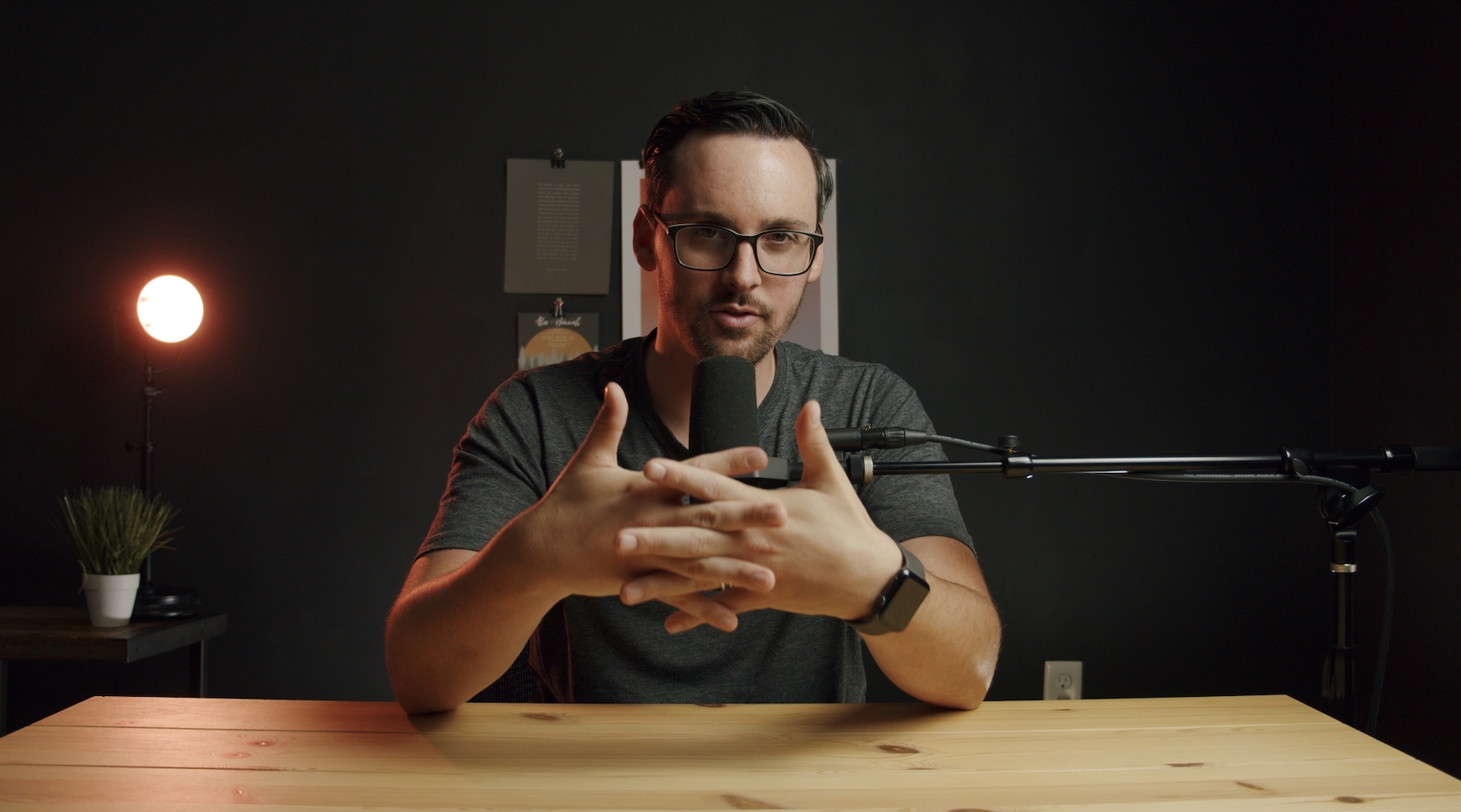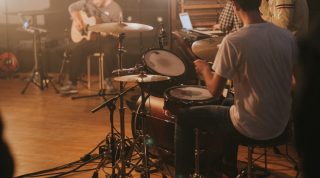One of the biggest changes in switching from live worship to online-only worship, has been stepping into the role of video director each week. By nature I’m an audio guy, and while I’ve done video work and graphics for years (I would indeed call myself a Pro-presenter 😉), directing live video is a whole new experience.
Here are 7 things I’m focusing on to help take my video directing skills to the next level.
1. Transitions
Transitions have always been a huge part of our services, but they’re even more important during online worship. In the past, I didn’t have to focus as much on transitions, people move around naturally. Now that we’re online, I have to spend a lot of time thinking through these transitions and sometimes even rehearsing them. This is especially true if it’s someone who’s new to the service or hasn’t done kind of video worship before.
The goal is to know how each transition is going to work and have a plan for it: both from people on stage, and knowing which camera will be here, when the transition comes.
2. Audio Levels
Being an audio guy myself, I’ve always spent a lot of time just paying attention to audio. However, I’ve never paid so much attention to the levels of our audio, specifically the differences between a worship song and speaking. I’ve noticed some weeks the worship team will finish and whoever is speaking next will be so quiet, you have to turn up the volume.
Right now we’re pre-recording our services which means I can cleanup the audio during editing. But, I’m working with getting my team so we’re ready when we start live-streaming services again.
3. Comms Lingo
There are 2 main points to communicating with comms lingo. The first is me communicating concisely with the camera team.
I’ve learned over time if I say things quickly, like “ready 1, take 1” is much better than what I used to say, (“Okay, get ready camera one… and go camera one.”) Being concise helps prevent being overloaded with multiple people talking into your ear.
I’ve also learned the more concise I am, the faster I can get the shots I need. If I say a full sentence like, “Hey Daniel, on camera one, can you give me a tight shot of Kim?” In the time it took to actually say that, he could’ve already had the shot, if I just said, “5, I need a tight on Kim.”
The second part of comms lingo is defining what we mean by certain terms.
Everyone in video world uses similar terms: medium shot, wide shot, close up/tight shot. These are standard terms, but I’ve learned I need to help define what each term means and what I’m looking for as a director.
When I say a tight shot, people know that a tight shot means this specific framing. When I call for a double-wide they know I mean a medium shot of two people. The goal is for everyone to have a common language to make communicating faster and more efficient.
4. Framing & Composition
Framing is exactly what it sounds like: making sure shots are framed properly. Specifically, this means making sure each camera op understands the rule of thirds and isn’t giving too much or too little head room or lead room in a shot.
In regards to composition, as I’ve gotten more comfortable in my directing skills, I focus a lot more on cutting different shots together to create a sequence. I used to simply shoot what I saw. If a song starts on the piano, I’d get a close up of the piano. Over time, I’ve started to focus more on weaving multiple clips together to help tell the story of what’s happening in worship.
5. White Balance & Color
Our church is a traditional sanctuary and we have very little control over our lighting. It’s been a huge challenge trying to get accurate white balance and match three different cameras with three different lenses.
I’m trying to make sure the color is consistent between each shot, but I’m also trying to use color to best represent how the room looks and feels (typically very warm). Sometimes I have to sacrifice perfect white balance to make sure the color is balanced between shots and feels natural for our space.
6. Movement/Motion
When we first started online-only worship, we focused on the basics: making sure cameras were stable and in the right spots at the right time. Over time, these static shots can tend to feel a little dull and lifeless. To change this, I’m focusing more on camera movement and motion.
We often have times where we’ll be on the same person for a while, or we’ll have a long prayer moment. For most of these longer shots, we’ll put up a graphic. It works, but a little bit of camera movement could add a lot of emotion and energy to make these shots more interesting.
The biggest challenge is trying to add motion within our limitations. Is there more gear I can add to help get interesting shots? Are there ways we can get more subtle movement with our existing camera setups? I spend a good amount of time thinking about this and how movement/motion is an excellent tool for storytelling in worship.
7. How the team works together
Specifically what I mean is the culture between different camera ops and video directors. There are different ways you can approach live video: having the director call all the shots, having camera ops getting their own shots, or a combination of both.
One of the issues I’ve run into is everyone will go for a creative shot at the same time. It’s nice, but sometimes I’ll wind up having three instrument shots and miss important vocal/leader shots. I’m trying to find ways to give people freedom to grab their own shots, but also make sure I’m clear when I need folks to cover certain people.
One of the biggest challenges is figuring out how this works with each individual camera operator and video director. How can all use our own strengths but still be consistent from week to week?
How are you growing this season?
Here are just a few things I’m learning as I move into the video director seat each week. I’d love to hear what you’re learning in this unique time in history! Drop a comment on YouTube, shoot me an email, or post in the community. I’d love to hear from you!










![These past few months have been a whirlwind - certainly a ton of fun and a whole lot of change. There are a few brands/companies who have not only made my work possible, but have made it better than I could have imagined.
This week I’m giving a big round of applause to you @vimeo @lifechurchopen @planningcenter @blackmagicnewsofficial @lensrentals. Thank you all SO much. 👏🏼
Watch the full video: [Link in bio]
#theproductionpastor #production #churchproduction #churchtech #worshipproduction #liveproduction #churchtechleaders #ctln #churchtechs #churchavl #crtvchurch #FILOcommunity #churchaudio #churchlx #worshiplights #sundayservices #sundaymorning #sundayworship](https://scontent-ort2-2.cdninstagram.com/v/t51.2885-15/115907877_623433885220354_4782401585938248285_n.jpg?_nc_cat=108&ccb=1-5&_nc_sid=8ae9d6&_nc_ohc=v0Fu88T3YLwAX9giyGy&_nc_ht=scontent-ort2-2.cdninstagram.com&edm=ANo9K5cEAAAA&oh=cc82d64178b0d96109dfb52779574c25&oe=616A5E62)

